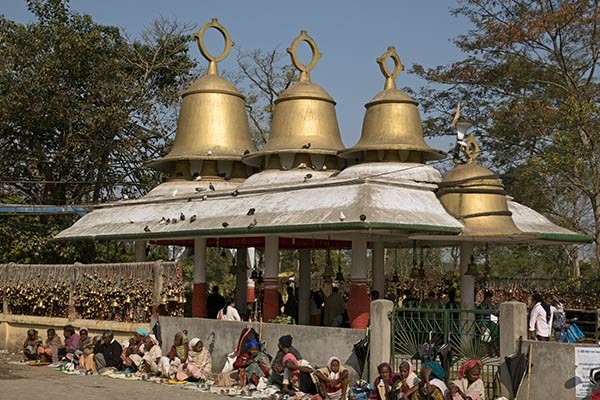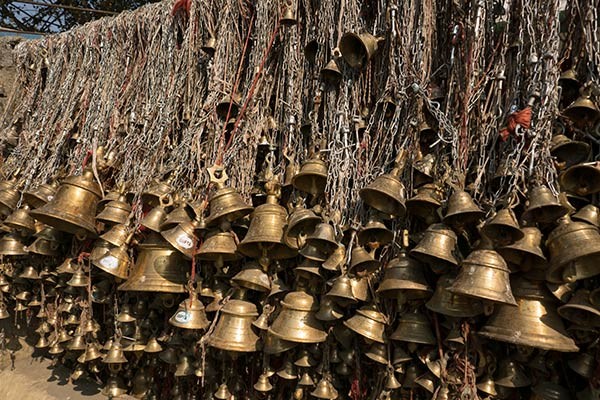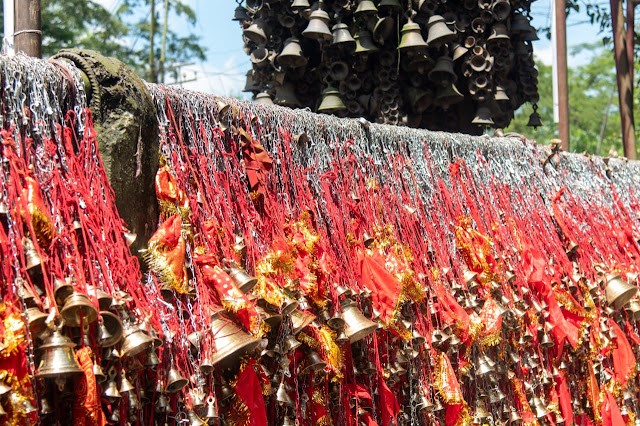- Private car and driver in Delhi / India
- +91-8447445445
- info@discoverindiabycar.com sugar.ankit@yahoo.com
 +91-9818434712
+91-9818434712
Guide to know the story of tilinga mandir in bordubi assam
Situated in the valleys of the Barak and Brahmaputra rivers, eastern Himalayas south, the stunning Indian state of Assam is a popular tourist spot. There happen to be a lot of priceless antiques there. About nine kilometers away lies the Tilinga Mandir Bordubi Assam, also known as the Bell Temple, in Tinsukia, Assam.
For this reason, the temple welcomes thousands of tourists each year from across the country as well as the state. The age of the temple—roughly fifty years—is reflected in the hundreds of bells hanging from the tree. These bells are stored on the temple premises in gunny bags since the temple administration is unwilling to part with them.
Tilinga Mandir Bordubi Assam Timeline


Traditions that have been carried on at Tilinga Mandir Bordubi Assam for centuries
The reason for the people’s great admiration for the temple is their strong belief that all of their wishes would be granted if they pray to Lord Shiva. After the person receives the benediction, a bell is given to the temple. When their desires are granted, devotees often express their gratitude by offering a bell, trishul, or pigeon. The Shiva Linga at this temple is said to have sprung from subterranean and come to life next to an existing banyan tree. This hypothesis is supported by the temple’s existence for almost fifty years.
Bordubi and Tilinga Mandir hosted events as part of the festivities
Since the Mahashivratri festival is the most significant event held there, people swarm to the temple complex during this time hoping that their desires will be fulfilled. In addition to the exquisite decorations of the temple complex, cultural events and fairs are also organized with the same goal in mind.
Bordubi or Tilinga Temple Schedules
Any day of the week between six in the morning and eight in the evening is when you can visit Tilinga Mandir Bordubi. When is the best time to visit the Tilinga or Bel temples in Assam for an unforgettable experience? The best months to visit the temple are February through May, when the weather is nice. Try to visit around October or November if at all possible.
Tilinga Mandir’s location and directions Bordubi
For visitors arriving by air, the closest airport to this temple is Mohanbari Airport. Taking any of the several local public transportation options or grabbing a cab will make it simple for you to get to this temple from your current location.
Tinsukia is the closest train station to Tilinga Mandir Bordubi, situated approximately 14 kilometers away from the temple. This temple is almost fourteen kilometers away. Taking any of the several local public transportation options or grabbing a cab will make it simple for you to get to this temple from your current location.
From Tinsukia or Dibrugarh, the drive to Bordubi is an amazing experience. Enjoy the sights and sounds of verdant tea gardens, observe the process of picking tea leaves, and inhale the aroma of freshly brewed tea drifting from the factories in the area. The expanses of gardens that appear to go on forever are breathtaking.

Conclusion
The temple sees an increase in visitors during the winter, with November—the month that falls on the same day as the well-known Shivaratri festival—seeing the biggest increase. The temple draws a sizable population for its religious ceremonies as well as the nearby mela, or fair. It is recommended that you schedule your visit during this period to have the best chance of witnessing the temple in all of its colorful grandeur.
FAQ
Q1. What is the time to visit tilinga mandir bordubi assam?
A. The best time of visiting Tilinga Mandir happens to be from the month of November to April. Throughout this time, Assam weather is pleasing, with modest temperatures and slight rainfall.
Q2. What is the visiting hour of tilinga mandir bordubi assam?
A. Tilinga Mandir in Bordubi is open from 6 in the morning to 8 in the evening everyday of the week.
Q3. What is the exact location of tilinga mandir bordubi assam?
A. The temple happens to be located in the small town of Bordubi. It is well associated to the closest rail station Tinsukia.
Q4. What festival happens at tilinga mandir bordubi assam?
A. The temple sees an increase in visitors during the winter, with November—the month that falls on the same day as the well-known Shivaratri festival—seeing the biggest increase. The temple draws a sizable population for its religious ceremonies as well as the nearby mela, or fair.











